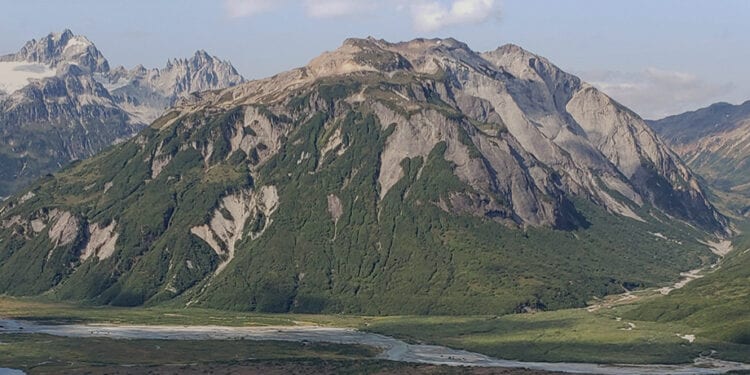Expands Resource Potential With 100M Step-Out Success
HighGold Mining Inc.(TSX-V:HIGH) has received positive new assay results from its 2020 exploration drilling programne at its flagship Johnson Tract polymetallic Gold Project in Southcentral Alaska, USA.
President and CEO, Darwin Green, said the results include drill intersections that continue to expand the down-plunge and up-plunge extents of the JT Deposit (JT) and also demonstrate the continuity of the deeper Footwall Copper-Silver Zone (FCZ).
“We continue to be encouraged by the continuation and strength of the JT Deposit mineral system at depth and by the emergence of the Footwall Copper-Silver Zone, a new area of copper-silver rich mineralisation with resource potential that contributes to the overall metal endowment at Johnson,” Mr Green said.
“The current batch of drill results are base-metal dominant and highlight the presence of copper and zinc-rich domains within the polymetallic gold-rich JT Deposit.
“Drilling in 2020 significantly expanded the JT Deposit footprint with step-outs from the Indicated Mineral Resource of 750k oz AuEq (417k oz Au plus Zn, Cu, Pb, Ag) at a grade of 10.9 g/t AuEq (6.1 g/t Au) over true thickness of 20 to 50m.
“As new data is received, HighGold’s geological and structural model continues to evolve. Based on the new data, it appears that a significant portion of the mineral system is open to expansion down-plunge and is not cut-off at depth as interpreted by previous operators.
“With approximately C$18 million in the treasury, the company is fully funded to further test the limits of these zones and other targets in 2021.”
The 2020 Drill Programme totalled 16,418m in 32 completed drill holes. Assays remain outstanding for 12 drill holes and will be released in batches as they are received and evaluated.
The Au-Cu-Zn-Ag-Pb mineralisation associated with the JT Deposit has now been intersected over a strike length of 325m and a down-plunge distance of 400m and remains open for expansion along strike to the northeast and southwest, and at depth.
JT Deposit Targets
Drill holes JT20-108 and JT20-110 were drilled on the same cross-section, approximately 100 meters apart, to test the area 25m to 50m along strike from previously released step-out drill holes along the northeast, down-plunge edge of the JT Deposit. The results from hole JT20-110 were particularly encouraging with a broad 58.3-meter intersection of copper-silver dominant mineralisation representing the Footwall Copper Zone. The FCZ is a newly defined subzone of the JT Deposit and has now been intersected in six holes. Holes JT20-115 and JT20-113, drilled as 50-meter step-outs above and below these two holes, are still pending receipt of assays.
Drill hole JT20-120 was a farther 75m step-out to the northeast from the JT20-108/JT20-110 cross-section and intersected an upper six-metre gold-zinc zone and lower 11m zinc-copper zone corresponding to the JT Deposit. Hole JT20-120 has now extended the limit of mineralisation 100m beyond the modelled resource outline and the zone remains open along strike to the northeast and down-plunge.
Drill hole JT20-121 was designed to test the shallow southwest strike extension of the JT Deposit, 25m outside the defined mineral resource and within 50m of surface. The hole intersected 18.3m of encouraging zinc-gold-silver mineralisation and the zone remains open in this direction.
The potential to continue expanding the mineralised zones at the JT deposit is considered excellent, Mr Green said.












